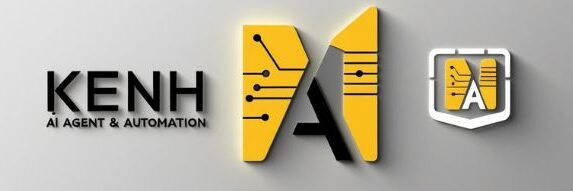Creating Your First AI Agent Workflow with Ease
Introduction
AI agents are no longer just for tech-savvy engineers. Thanks to modern tools and platforms, anyone can now create a custom AI workflow to automate repetitive tasks, manage data, or even generate content. Whether you’re a solo entrepreneur, digital marketer, or content creator, setting up your first agentic workflow is easier than ever.
In this article, we’ll walk you through what an AI agent workflow is, its components, real-world applications, and how to build one from scratch—with no coding required.
What is Creating Your First AI Agent Workflow with Ease?
Definition & Purpose
An AI agent workflow is a structured automation powered by one or more AI models that perform intelligent actions—like reading, writing, replying, or generating. It typically consists of:
Input trigger (e.g., form submission, voice command, incoming email)
Processing logic using AI (e.g., summarization, decision-making)
Output action (e.g., sending reply, posting content, updating a sheet)
The goal? To free you from manual tasks while leveraging AI’s cognitive capabilities.
Key Components
1. AI Models (Brains of the Agent)
GPT-4, Claude, Gemini, or open-source models (LLaMA, Mistral) for natural language processing.
Tools like LangChain or CrewAI enable advanced logic and memory.
2. Automation Platform (The Nervous System)
Make.com, Zapier, or n8n to connect AI with apps like Gmail, Notion, WordPress, or Slack.
These tools act as pipelines and execution engines.
3. Trigger Events
New document uploaded
Email received
Form submitted
Keyword appears on social media
These inputs activate your agent.
4. Output Channels
Email replies
Chatbot messages
Blog post publication
CSV/Google Sheet updates
Slack notifications
Real-world Applications
1. Email Summarization Agent
Input: Forwarded client emails
Process: Summarized by GPT-4
Output: Posts to Slack channel with key action points
2. SEO Content Generator
Input: Blog topic entered in Notion
Process: GPT-4 creates draft + DALL·E creates image
Output: Saved to WordPress draft folder with SEO metadata
3. Lead Qualifier Bot
Input: Contact form submitted
Process: AI scores the lead based on intent and priority
Output: Sends email to sales rep or logs into CRM
Case Study: AI Agent for Customer Service
Client: SaaS startup with limited customer support bandwidth.
Problem: 50+ repetitive customer questions daily.
Solution:
Created an AI agent workflow using:
GPT-4 via API to analyze questions
Make.com to trigger email replies
Google Sheet as training input source
Results:
80% of Tier-1 questions resolved automatically
60% drop in support costs
Faster response time improved customer satisfaction
Challenges and Considerations
1. Data Privacy & Security
Ensure your workflows don’t expose sensitive customer data—especially when using 3rd-party APIs.
2. Token and Usage Limits
Free plans from GPT tools or automation platforms may limit runs or features. Watch your quotas.
3. Workflow Bugs
Incorrect triggers or outputs can cause silent failures. Always test thoroughly and log errors.
4. Maintenance
As platforms evolve, API keys, endpoints, or plugins may break. Set regular review intervals.
Future Outlook
1. Visual AI Workflow Builders
Emerging platforms like Flowise or Dust allow visual drag-and-drop agent building—no tech skills needed.
2. Multi-Agent Collaboration
Agents will work in teams: one handles research, another content writing, and another project management—coordinated using frameworks like AutoGen or MCP (Multi-agent Communication Protocols).
3. On-device Agents
Local LLMs will run on your laptop or phone, ensuring privacy and low latency (e.g., Mistral on MacBook).
4. Agent Marketplaces
Platforms like SuperAgent, OpenAgents, and AgentHub will offer prebuilt plug-and-play AI agents for common workflows.
Conclusion
Creating your first AI agent workflow is no longer a technical barrier. With tools like Make, GPT, and LangChain, you can deploy intelligent automations in hours—not weeks. Whether you’re automating content, support, marketing, or daily tasks—AI agents will quickly become your best digital co-worker.
🚀 Want to Master AI Tools?
Join our recommended AI course and learn to build powerful AI agent workflows—no code required!
